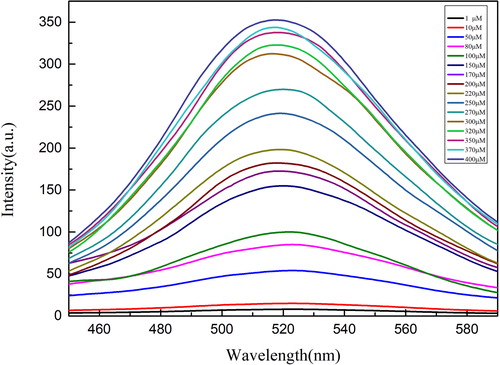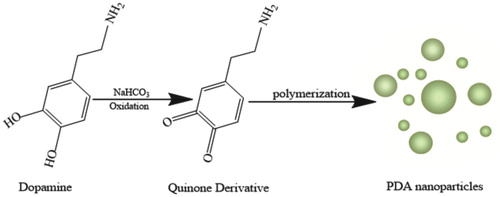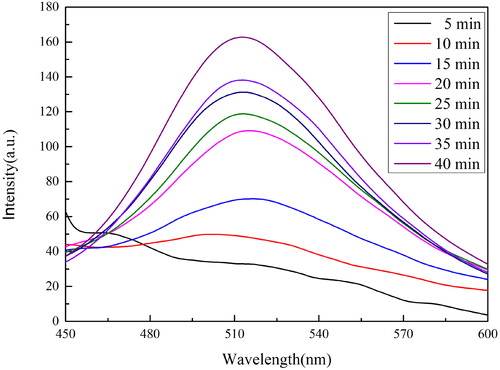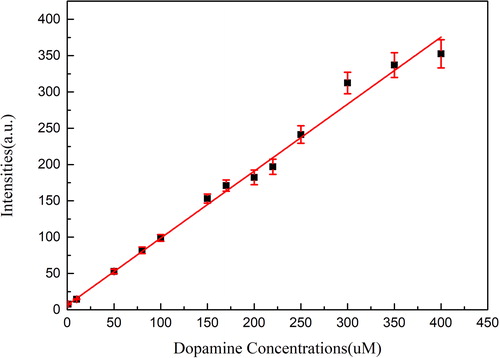Figures & data
Figure 4. Fluorescence spectra of the test solutions with different DA concentrations at the same test condition.

Table 1. Comparison between present method and literature.
Figure 6. The fluorescence intensities of DA test solution and other test solutions with different chemicals. (DA concentration was 10 μM and the concentrations of other substances were both100 μM. DA MIX, mixture of all interfering chemicals; UA, uric acid; AA, ascorbic acid; Asp, aspartic acid; Lys, lysine; Glc, glucose; Suc, sucrose).

Table 2. Recovery of DA in serum samples with different additions of DA (n = 5).




